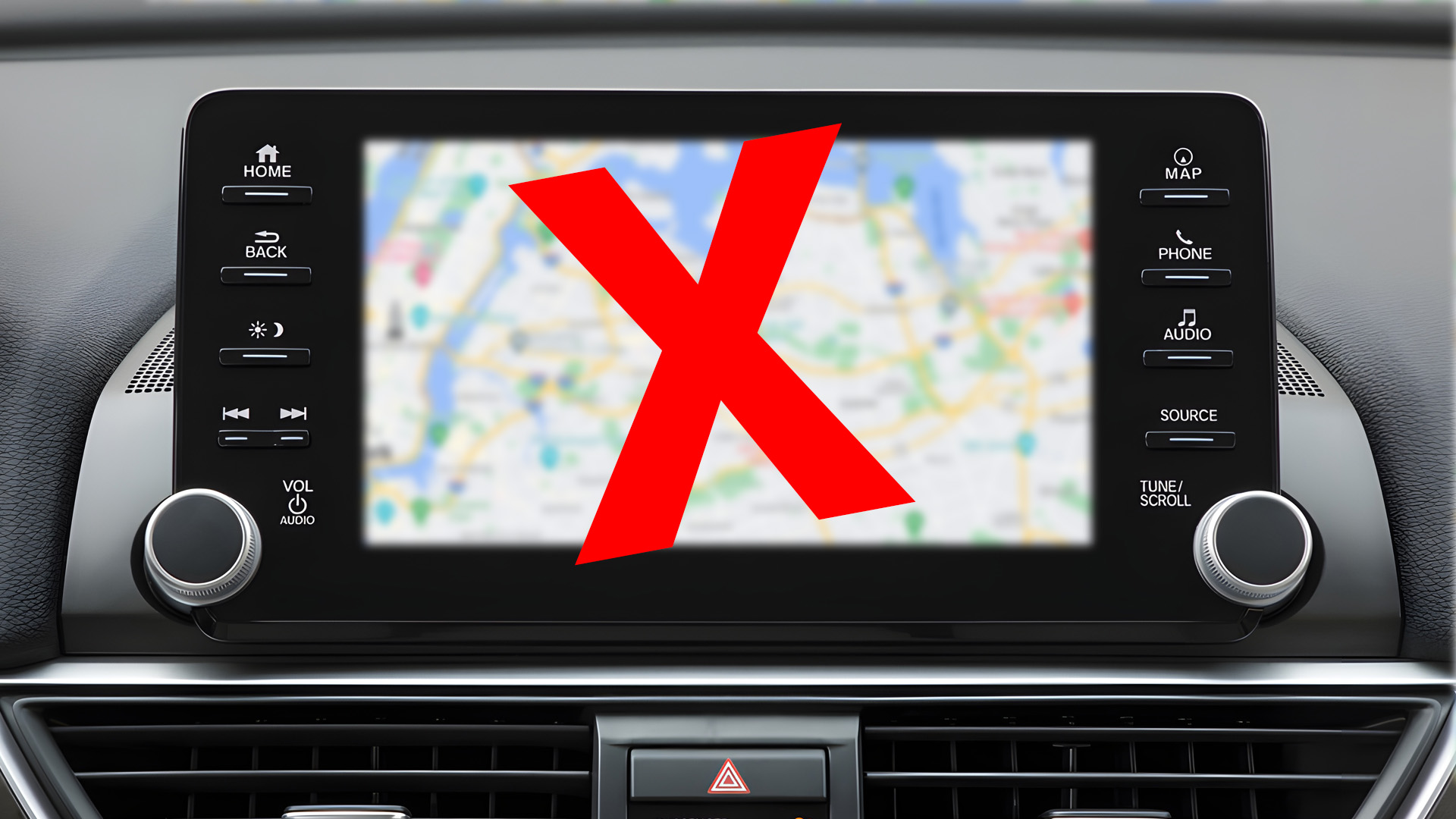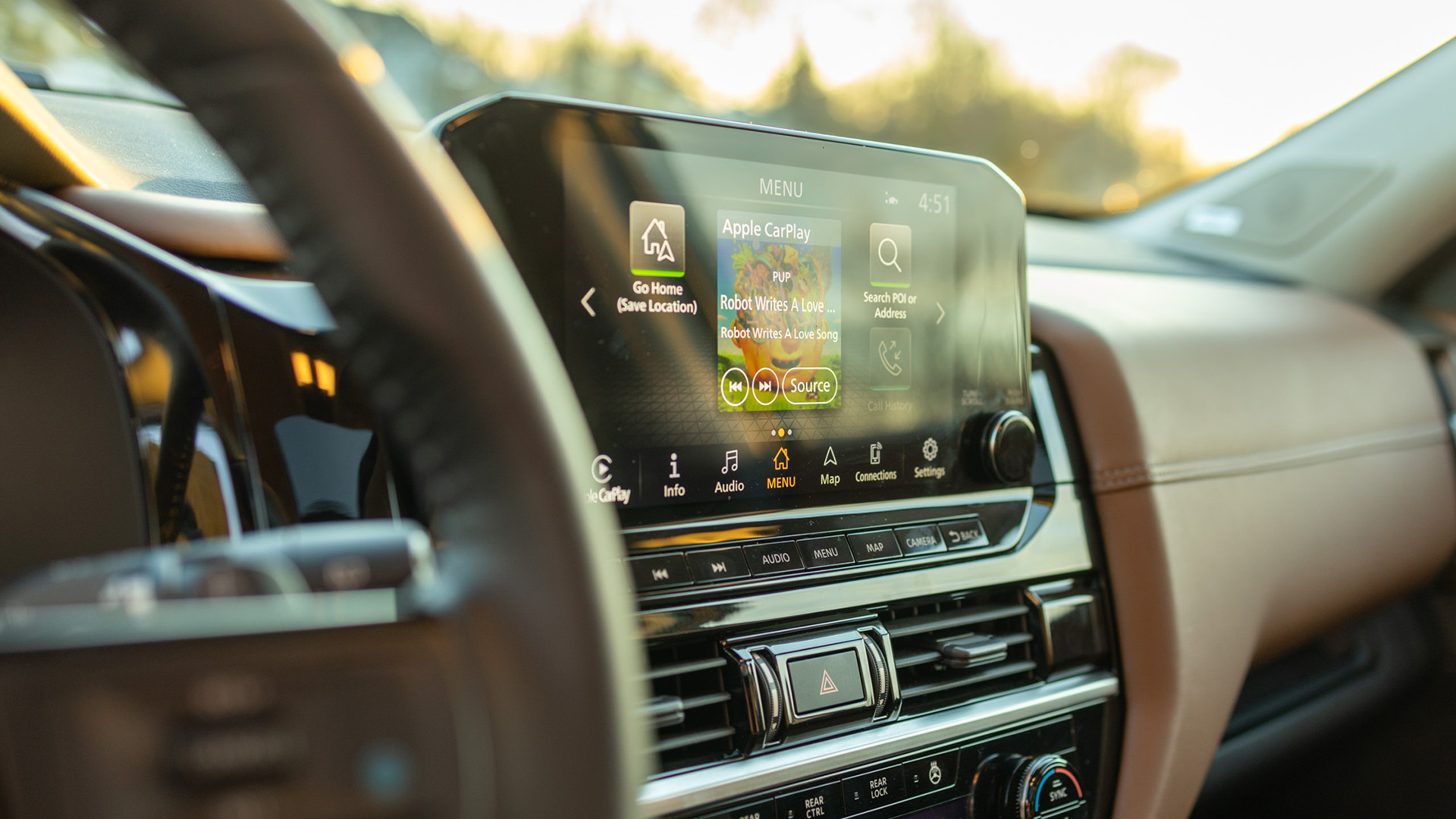

There’s no way to sugarcoat it: Factory in-car navigation is almost always awful. Terrible user interfaces, illogical workflows, and sub-par voice commands leave much to be desired in brand-new vehicles. That’s especially frustrating given how much real estate is taken up by screens in cars today.
No matter how much automakers try to improve the experience of using a vehicle’s infotainment system to navigate from your home to your destination, the industry is constantly falling short of the experiences offered by Android Auto and Apple CarPlay. So just why are automakers still trying to improve in-car navigation on their own?

One of the first things I look for when buying a new vehicle is CarPlay integration, and thankfully, most new vehicles offer it. The lifelong experience of trying to utilize an automaker’s in-car navigation system has left me a bit salty—whether it be poor voice recognition or the fear that my connected car may one day stop looking for updates due to changes in technology, like the recent shutdown of the 3G cellular network.
Maybe automakers should stop trying to develop in-vehicle navigation and leave it to the software pros like Google and Apple. Or better yet, use something that many drivers have in their pocket already: their cell phone.
Before you start commenting, hear me out.
According to Pew Research, 85 percent of Americans own a smartphone. Consider that with the 88 percent of U.S. adults that own a vehicle, according to Bloomberg, and you can see just how big the overlap is in those two areas. To top it all off, about 80 percent of new vehicles support Apple CarPlay, according to CNBC. It’s probably fair to assume, then, that most people buying a new car today have their smartphone with them and have purchased a vehicle equipped with the ability to use CarPlay or Android Auto. And since you’re able to download offline maps, the old excuse of poor cell coverage requiring the backup solution of in-car maps is almost rendered obsolete.
Automakers also historically lock features like navigation behind higher trims; meanwhile, smartphone integration is often a more desirable feature and is available on lesser trims. Take the Honda Accord, which I own, for example. CarPlay and Android Auto integration are available all the way down to the base LX trim, whereas in-car navigation is only available on the top-tier Touring trim—a price difference of $11,930 between the two. Navigation might be an up-sell to sway buyers towards the Touring, but I can’t think of a single time that I’ve used the in-car navigation and said to myself, “Boy, I like this a lot more than CarPlay.”
The same goes for nearly every single press car I’ve driven, including the recent time I’ve spent with the 2022 Nissan Pathfinder. There’s no trying to appease the car’s proprietary voice recognition system and no fiddling with the infotainment screen to switch between searching for a street address or point of interest, and no need to worry about manual map updates, which isn’t necessarily an issue with most connected cars today.
Now, there are a few things coming down the line that could change how we feel about in-car navigation, and those too rely on modern connected cars.
The new Volvo XC40 Recharge, for example, uses Android Automotive OS—not to be confused with Android Auto smartphone integration—which brings a superior navigation and voice recognition experience to the vehicle cockpit. The new Hummer EV offers a similar experience, and future Ford vehicles will be doing the same.

There’s also vehicle charging integration for maps, which will almost certainly be a requirement with the shift to electrification. Tesla has historically been king with this, offering in-car charging stop info, though Android Automotive OS is also working to include charging station locations in its native infotainment-based navigation. For what it’s worth, the support is already there for Android Auto and Apple CarPlay. We may also see a return to in-car navigation as vehicles receive more complete autonomous features—but we’re not quite there yet.
The point is, we seem to have arrived at this weird purgatory that exists between subpar and superior infotainment systems, and Google appears to be the company filling the void rather than the traditional automakers that have failed to fill it for nearly two decades. More car companies should be partnering with software-based kingpins like Google to better the in-car experience, especially if they plan to build a platform for the next-generation vehicle owner.
So how about you—would you rather your car manufacturer or cell phone maker be in charge of guiding you around the block?
Got a tip or question for the author? Contact them directly: rob@thedrive.com